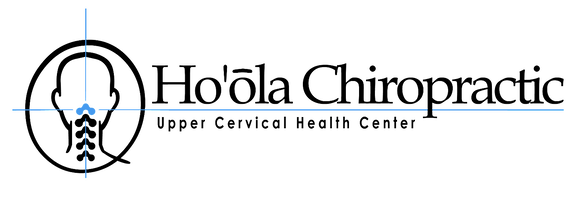Back pain chiropractor care can be one of the most effective ways to treat disc-related issues without the need for surgery or heavy medication. In Palolo, Honolulu, Hawaii, many individuals experience ongoing back discomfort due to herniated, bulging, or degenerative discs—conditions that can disrupt daily life and lead to more serious complications if not addressed early.
Understanding when to seek chiropractic care, how disc-related back pain develops, and what non-invasive options are available is key to managing your health. This guide will help you explore everything you need to know about disc-related back pain and how chiropractic care fits into the picture.
What Causes Disc-Related Back Pain?
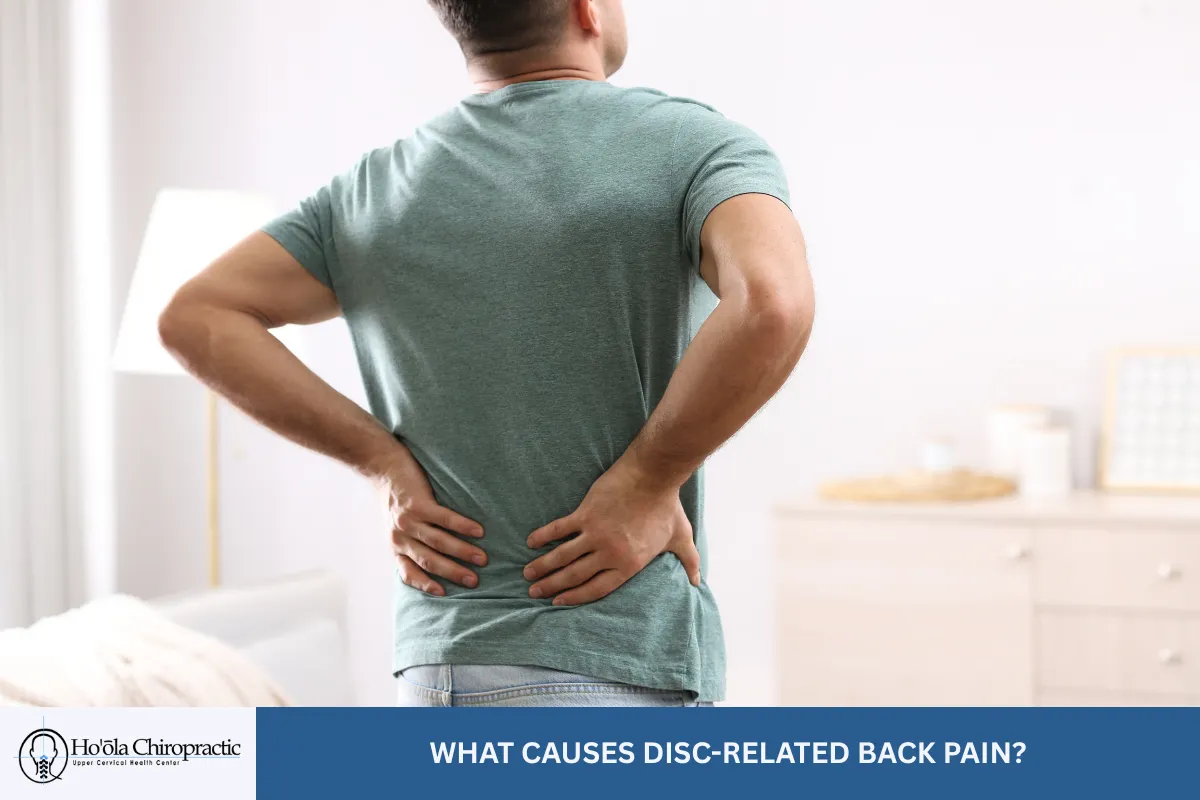
Disc-related back pain stems from the intervertebral discs in your spine, which serve as cushions between the bones (vertebrae). These discs allow for flexibility and help absorb shocks from everyday movements like walking, bending, or lifting. However, over time or due to injury, these discs can become damaged or worn down.
Herniated Discs
A herniated disc, sometimes called a slipped or ruptured disc, occurs when the inner gel-like core of a spinal disc pushes through the tougher outer layer. This can irritate nearby nerves, resulting in localized pain or radiating symptoms such as numbness, tingling, or weakness in the arms or legs. In some cases, the pain can become chronic if left untreated.
Bulging Discs
Bulging discs are slightly different from herniated discs. In this condition, the disc extends beyond its normal boundary but does not rupture. Bulging discs can press on nerves and cause discomfort, especially during certain movements or positions. Unlike herniation, bulging discs may develop slowly and go unnoticed until the symptoms intensify.
Degenerative Disc Disease
Degenerative disc disease is a condition where the spinal discs lose their strength and elasticity due to aging, repetitive motion, or injury. The discs may thin, dry out, or develop tiny tears. As they deteriorate, they can cause chronic pain and limit mobility. Although it’s called a “disease,” it is a natural part of aging, but it can become problematic without the right care.
Recognizing the Symptoms of Disc Problems
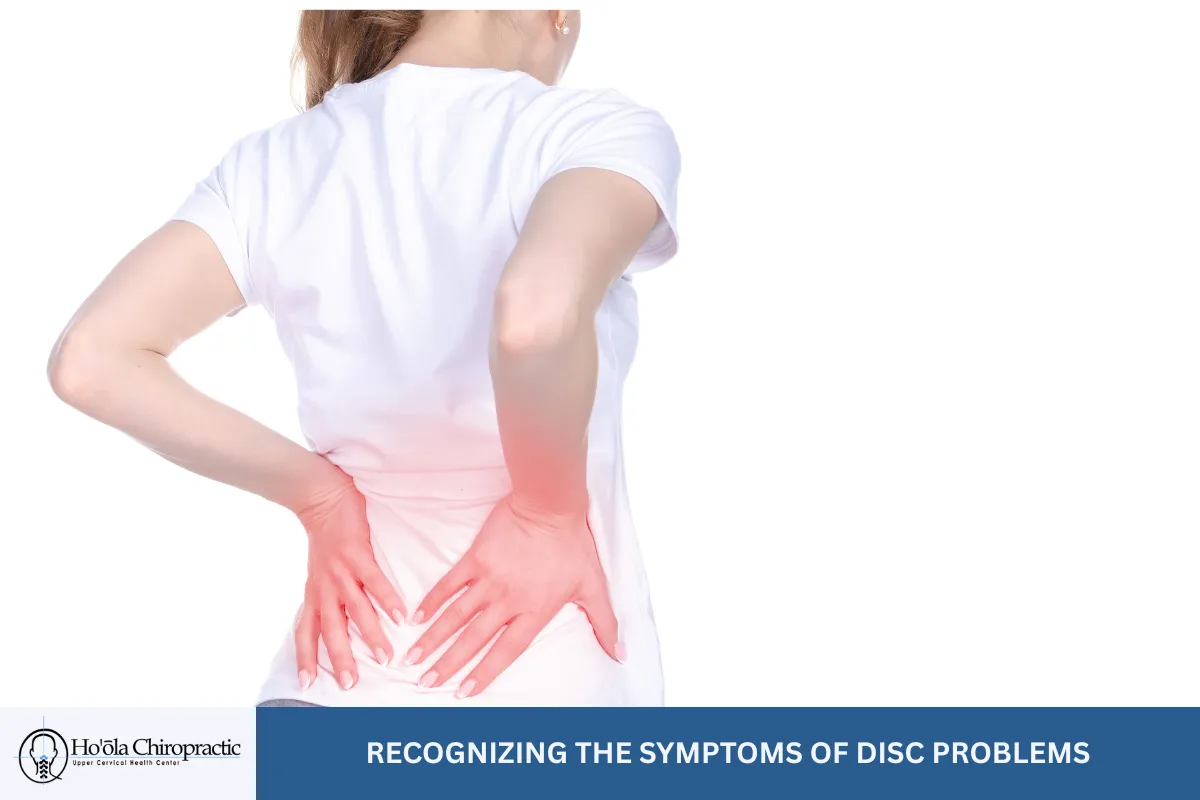
Disc-related pain can show up in a variety of ways. Knowing what to look for can help you act sooner rather than later.
Localized Back Pain
Persistent pain in the lower or mid-back that worsens with movement or sitting can be a clear sign of disc damage. You may feel stiffness, aching, or sharp pain depending on the position of the affected disc.
Radiating Pain
One of the hallmarks of disc issues is pain that travels, commonly known as radiculopathy. You may feel discomfort radiating down your leg (sciatica) or into your arms and shoulders, depending on where the affected disc is located.
Numbness or Tingling
If the disc compresses a nearby nerve, it can interrupt normal nerve signals. This often results in numbness, tingling, or a pins-and-needles sensation that doesn't go away.
Muscle Weakness
Disc pressure on nerves can weaken the muscles served by those nerves. This can lead to issues like difficulty lifting objects, standing on your toes, or holding things securely.
When Should You See a Chiropractor?

Chiropractors specialize in spine and nerve function. They are trained to detect misalignments and disc issues and use hands-on techniques to restore mobility and reduce discomfort. Timing is everything—early intervention can prevent a minor problem from becoming long-term pain.
After Persistent Pain Lasts More Than Two Weeks
Suppose your back pain continues beyond two weeks despite rest, light movement, or over-the-counter medication. In that case, it’s time to seek help. Pain that doesn’t improve may indicate a disc issue that requires professional attention.
If You Notice Radiating Pain or Numbness
Pain traveling down the limbs or feelings of tingling and numbness often point to nerve involvement. A chiropractor can assess whether a disc is pressing on a nerve and begin treatment to relieve the pressure.
When You’ve Been Diagnosed with a Disc Condition
People diagnosed with a herniated, bulging, or degenerative disc can benefit from chiropractic care as a non-invasive option to relieve symptoms and improve spinal function. Chiropractors focus on addressing the cause rather than masking the symptoms.
When You Want to Avoid Surgery or Long-Term Medications
Surgery and prescription drugs carry risks and side effects. Chiropractic care offers a conservative and natural method to treat disc issues, helping many people manage or even eliminate their symptoms without more invasive methods.
How Chiropractic Care Supports Disc Healing
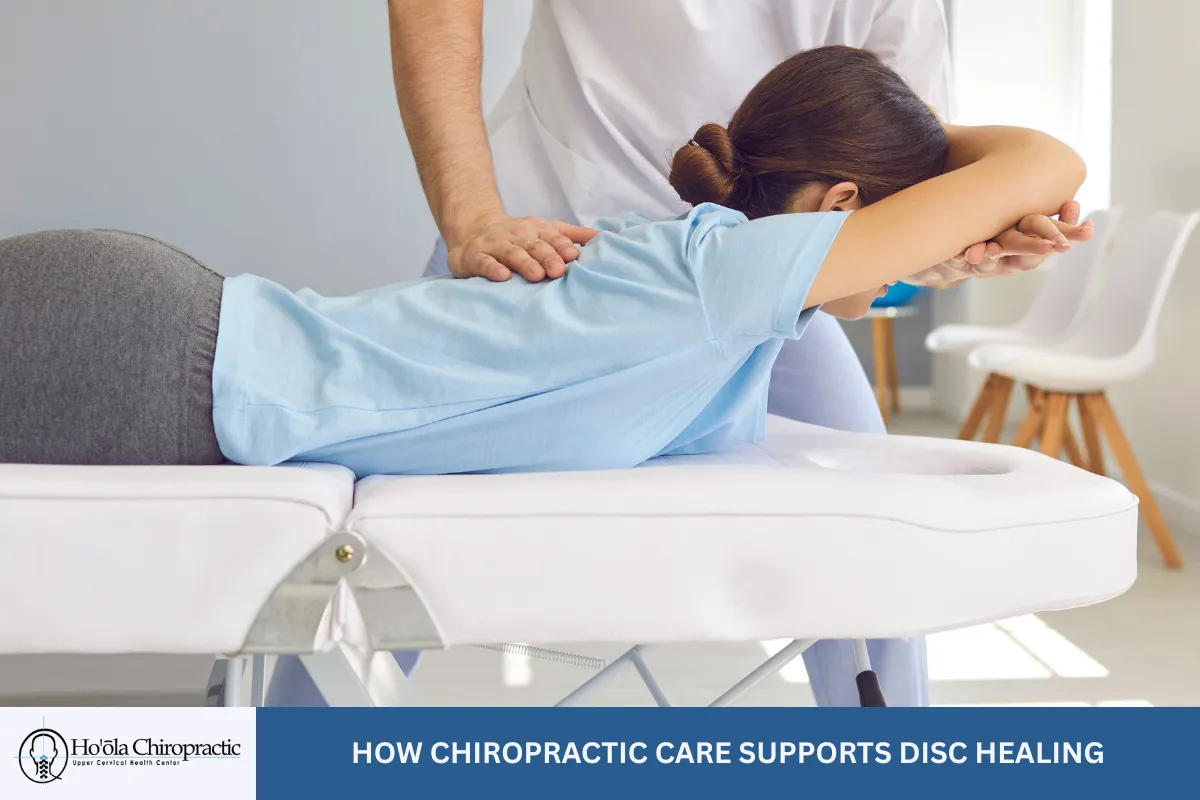
Chiropractic treatment doesn’t “fix” the disc directly. Still, it helps create an environment where your body can heal more efficiently by improving alignment and reducing pressure on nerves.
Spinal Adjustments
A spinal adjustment, or manipulation, involves gentle, controlled force applied to a spinal joint. This improves motion, reduces inflammation, and helps the disc return to a healthier position. The goal is to relieve nerve irritation and restore proper function.
Flexion-Distraction Therapy
This technique uses a specialized table that gently stretches the spine. The method is particularly helpful for herniated discs, as it helps reduce disc pressure and increases circulation to support healing.
Posture and Ergonomics Coaching
Bad posture is one of the leading contributors to disc wear and back pain. Chiropractors can evaluate your sitting, standing, and movement habits and suggest simple corrections to reduce daily strain on your spine.
Therapeutic Exercises
Chiropractors often guide patients through tailored stretches and exercises that strengthen the back and abdominal muscles. A stronger core reduces the load on the spine and helps protect it from future injuries.
What to Expect During Your Chiropractic Visit

Chiropractors take a thorough approach to identifying and treating the cause of pain. Here’s what typically happens:
Initial Assessment
You’ll discuss your health history, symptoms, and daily activities. The chiropractor will use this information to look for patterns and pinpoint possible disc involvement.
Physical Examination
A hands-on exam will assess your spine’s alignment, range of motion, nerve response, and muscle strength. This may also involve simple orthopedic tests to understand the severity of your condition.
Imaging (if necessary)
In some cases, chiropractors recommend X-rays or MRIs to assess disc positioning and rule out other health concerns.
Personalized Treatment Plan
Your chiropractor will create a plan designed to restore mobility, ease nerve pressure, and prevent further disc damage. This may include adjustments, at-home stretches, and lifestyle modifications.
Chiropractic Care vs. Other Treatment Options
There are multiple ways to manage disc-related back pain, but not all are created equal.
|
Treatment |
Invasiveness | Recovery Time | Medication Use | Long-Term Support |
| Chiropractic Care | Non-invasive | Short | None or minimal | Yes |
| Surgery | Invasive | Long | Often required | Sometimes |
| Pain Medications | Non-invasive | None | High | No |
| Physical Therapy | Non-invasive | Moderate | None |
Yes |
Chiropractic care provides an effective balance of hands-on healing without the risks of surgery or medication dependency. It is especially beneficial for individuals looking to take control of their recovery with minimal downtime.
Staying Active While Managing Back Pain

Disc issues don’t mean you have to stop moving entirely. Staying active helps reduce stiffness and improve circulation. However, not all activities are equal.
Gentle Movement
Walking, light stretching, and swimming are low-impact ways to stay mobile without adding strain to the spine.
Avoid High-Risk Activities
Skip activities that involve twisting, bending under pressure, or lifting heavy objects until your chiropractor gives you the green light.
Daily Habits Matter
Small changes like using a lumbar cushion, adjusting your chair height, or sleeping with proper spinal support can make a big difference in your healing process.
The Long-Term Benefits of Chiropractic Care

Many people who start seeing a chiropractor for disc-related issues continue care long-term—not because they stay in pain, but because they want to stay out of pain.
Prevent Recurrence
Ongoing care can help maintain spinal alignment, improve flexibility, and reduce the risk of reinjury.
Better Overall Wellness
Spinal health affects the entire nervous system. Many patients report improvements in sleep, digestion, and energy levels after consistent chiropractic treatment.
Improved Quality of Life
With less pain and more movement, simple activities like playing with your kids, going for walks, or doing yard work become easier and more enjoyable.
Is Chiropractic Care Right for You?
If disc-related pain is interfering with your daily life, chiropractic care can be a practical and safe solution. With the right approach, many individuals in Palolo have found relief, regained mobility, and avoided more invasive treatments. A chiropractor can offer expert guidance and hands-on care tailored to your condition and lifestyle, helping you move forward—comfortably and confidently.
Palolo Back Pain Chiropractor – Ho'ola Chiropractic
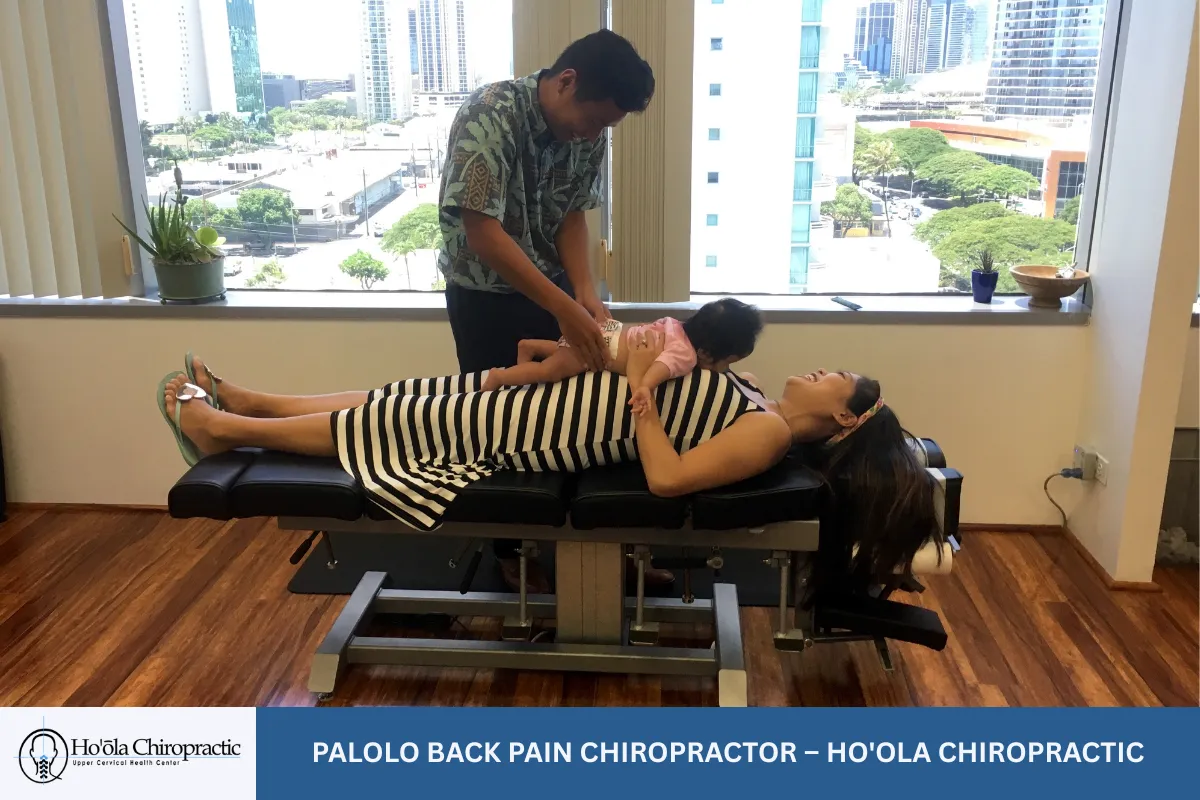
At Ho'ola Chiropractic, we understand how life-changing back pain can be. That’s why we focus on providing real solutions for disc issues, using safe and natural methods designed to reduce pain and improve spinal health. Our care is gentle, personalized, and always centered around your comfort and goals.
Our team, led by Dr. Luke, offers a supportive environment where healing happens. Whether you're dealing with herniated discs, chronic stiffness, or related issues like migraines or neck pain, we’re here to help your body recover naturally by removing nerve interference and restoring balance.
We welcome residents of Palolo and nearby areas who are ready to take back their mobility and improve their quality of life.
Call us at (808) 772-8284 to schedule your visit today and experience a fresh path toward long-term relief.
Frequently Asked Questions About Disc-Related Back Pain and Chiropractic Care
What is the difference between a herniated disc and degenerative disc disease?
A herniated disc and degenerative disc disease are two different spinal conditions. However, both involve the intervertebral discs in your spine. A herniated disc occurs when the soft nucleus pulposus pushes through a tear in the tough outer ring called the annulus fibrosus, often pressing on a nearby spinal nerve. This can cause sharp pain, numbness, or muscle spasms, especially if the sciatic nerve is affected.
On the other hand, degenerative disc disease is a gradual condition where discs lose hydration and elasticity over time, reducing their ability to cushion the vertebrae. This can lead to low back pain, limited movement, or even spinal misalignment.
Here’s a quick breakdown:
- Herniated disc: Often sudden; caused by trauma or heavy lifting.
- Degenerative disc: Progressive; part of aging or long-term strain.
Both can be managed through chiropractic care, manual therapies, or spinal manipulation.
How does chiropractic care treat disc herniation?
Chiropractors focus on the root cause of pain by restoring spinal alignment and relieving nerve pressure. In cases of disc herniation, they use several gentle and targeted techniques to reduce symptoms and improve mobility without surgery.
Here’s how chiropractic care helps:
- Spinal manipulation: Adjusts the position of the vertebrae, easing pressure on the disc and surrounding spinal nerves.
- Pelvic blocking: Specially placed cushions shift the pelvis to reduce disc bulging and pain.
- Traction table therapy: Gently stretches the lumbar spine, helping the disc retract and improve circulation.
- Manual manipulation and graded mobilization: Improves range of motion and reduces inflammation.
All these methods aim to restore function in the cervical spine, thoracic spine, or lumbar spine—whichever area is affected. Chiropractors also provide posture and movement guidance to support long-term healing and prevent future flare-ups.
Can spinal manipulation help with sciatic nerve pain?
Yes, spinal manipulation is often effective for treating pain related to the sciatic nerve, especially when caused by a pinched nerve or disc herniation. Sciatica occurs when the largest nerve in your body—the sciatic nerve—is compressed, often by a misaligned vertebra or a bulging intervertebral disc in the lumbar spine.
Chiropractors use specific techniques to:
- Improve spinal alignment
- Reduce disc pressure
- Ease muscle strain and tension
- Minimize inflammation in the nerve pathway
In many cases, a chiropractic adjustment can relieve pressure on the affected nerve root, which helps alleviate symptoms like burning pain, tingling, or numbness radiating from the lower back to the legs.
A combination of manual therapies, traction therapy, and graded mobilization can enhance results. Chiropractors may also recommend lifestyle changes and specific stretches to keep the spinal cord and surrounding tissues healthy and flexible.
Are manual therapies safe for degenerative disc disease?
Yes, when performed by licensed professionals, manual therapies are considered safe and beneficial for individuals with degenerative disc disease. This condition affects the structure and function of the intervertebral discs, leading to chronic low back pain, stiffness, and sometimes spinal misalignment.
Chiropractors typically use gentle and controlled techniques such as:
- Manual manipulation to improve joint mobility
- Spinal adjustments to reduce stress on the annulus fibrosus
- Graded mobilization for smoother movement in the lumbar or cervical spine
In cases of advanced disc degeneration, chiropractors avoid forceful movements. Instead, they may incorporate pelvic blocking, light stretches, and traction table sessions. These methods are designed to decrease inflammation, stabilize the spinal column, and reduce the strain on weakened discs.
By restoring balance and relieving nerve pressure, manual therapy can significantly improve comfort and quality of life for people with this condition.
What role does the nucleus pulposus play in back pain?
The nucleus pulposus is the gel-like center of each intervertebral disc. It plays a critical role in absorbing shock and maintaining spine flexibility. It helps distribute pressure evenly across the disc when you move, bend, or lift.
However, if the annulus fibrosus (the outer shell of the disc) tears or weakens, the nucleus pulposus can leak out, leading to a disc herniation. This bulging material may press on the spinal cord or a spinal nerve, causing intense lower back pain, muscle spasms, and in some cases, radiating leg pain.
Chiropractors address this problem through:
- Chiropractic adjustments to realign the vertebrae
- Spinal manipulation to relieve nerve pressure
- Manual therapies to reduce pain and inflammation
By relieving stress on the affected area and promoting healing, chiropractic care helps restore balance to the lumbar spine and improve long-term back health.
Read more: Top Signs You Need a Back Pain Chiropractor in Palolo, Honolulu, Hawaii for Muscle Strain Relief
